Last updated on January 4th, 2024 at 02:34 pm
Ps- I would really like to extend a big thank you to the authors. This is an indepth article on the role of P-TPM role at Facebook/Meta & also goes into great detail on the Technical Program Manager interview format. Special call out to Anupama Mayooranathan from Meta who had to get several approvals from her leadership and legal team to publish this article.
This blog post introduces the role of a Product TPM at Meta/Facebook, the expectations surrounding the role, and the skills required to be successful. We will also cover the interview process at Meta, and give you some context on how you can prepare for the interview, while highlighting some useful resources.
In Scope
– Product Technical Program Manager
Out of Scope
– Program Manager
– Infra Technical Program Manager
An Overview of what we will cover in this article
Role of a Product TPM
The title of a Technical Program Manager (TPM) and the associated expectations and responsibilities can vary with each company. Nevertheless, technical program managers are considered leaders of program strategy and execution. A TPM’s key role is to act as an enabler who can ‘move the ship forward, while it doesn’t sink’. Some of the key dimensions of a TPM role are dealing with ambiguity, scope and influence, execution and impact, all of which we will try to cover in this article.
Being a TPM at Meta requires driving impact and delivering quantifiable results across a wide range of areas. From hardware and network deployment to product releases and performance, TPMs strive for the flawless execution of company-wide goals.
TPMs at Meta are seen across these four vectors:
- Infrastructure TPM
- Product TPM
- FRL TPM (Facebook Reality Labs)
- EE TPM (Enterprise Engineering)
Here, we will be taking a closer look at the role of Product Technical Program Manager.
On a daily basis, a Product Technical Program Manager(P-TPM) at Meta partners with Product Managers and Engineering Managers to work towards a singular product vision, influence design, and lead execution, while leveraging a unique blend of skill sets. From a product perspective, P-TPMs are geared toward product execution as they influence product vision and strategy, and in some cases, even take ownership of it.
Product- TPMs at Meta have the strong technical acumen to influence and drive the right architecture and scalability decisions while keeping the focus on product vision and impacting the systems drive. P-TPMs are able to break down complex and ambiguous programs into smaller, achievable goals while mitigating any risks and identifying process gaps to streamline program efficiency. They work as the connective tissue between engineering and cross-functional teams.
What is the difference between a PM and a TPM?
In teams where PMs and TPMs exist, the areas of responsibilities/ownership are usually well-defined and clearly demarcated. The ownership of defining the vision and strategy for a product lies in the realm of a PM, while a TPM focuses more on execution and delivery. However, there are certain instances where the responsibilities are blurred/shared between the two roles, as is meant to be.
The below diagram can provide clarity on how the roles of an EM, a PM and a TPM can co-exist and support each other in successful product delivery-
There are three primary areas where a Product TPM can contribute towards impact:
- Product Platforms
- Large Cross-Functional Initiatives
- Specialized Technical Domains
By leveraging technical and product know-how in end-user problems and business needs, P-TPMs deliver on the vision, roadmap, and drive to end-to-end platforms that are often used by internal and external consumers. Through a blending of product knowledge and program management, P-TPMs impact how cross-team/org initiatives are driven, especially those that span multiple products and business needs. By bringing in domain expertise, a P-TPM acts as an anchor in driving impact on specific areas of a product/technology stack.
Skills To Be A Successful Product TPM at Meta:
- Program Management
- Good Interpersonal Skills – This helps in managing large-scale cross-functional teams and partnerships and aligning teams, partners, and stakeholders on the vision and goals of the program
- Competent Organizational Attributes – This involves overseeing vague and large-scale programs, developing processes to kickstart programs with measurable goals, and driving execution to ensure teams achieve the goals.
- Proficient Communication Skills – This will ensure that the program value is properly articulated and the progress of programs is communicated to all stakeholders and partners.
- Technical Competency
- Skilled Technical Acumen – This enables quickly learning and becoming the subject matter expert in a specific technical area
- Liaising with Engineering Teams – This will facilitate the designing of solutions that solve technical problems related to the goals of a program.
- Technical Competency – This involves a level of product skills that will help TPMs identify potential features and strategic improvements. Consequently, P-TPMs may even create new products and program areas, requirements, and goals, and also measure their progress using metrics.
- Leadership Skills
- Setting strategic direction and goals for the program from within
- Ruthlessly prioritizing the program roadmap to ensure that the program focuses on areas with impact for the team or focus area
- Using conflict resolution skills to ensure team members work well together and tactfully resolve any potential conflicts that could affect execution, while including stakeholder leadership in the resolution process when necessary.
General Interview Structure for Meta TPM Interviews
At Meta, we follow the below interview structure. This interview aims to evaluate a candidate on the core TPM Axes:
- Program Management: Can you execute and deliver on a vision?
- Leadership: Can you build strong relationships and rally a team?
- Technical Acumen: Can you have technical conversations with engineers and other cross-functional teams?
- Learnings: How well do you take constructive feedback/failures and learn from them?
Meta Interview Structure & Interview Rounds
Interview Structure
Step 0: You like the job description of the role? Are you excited to work for Meta? Apply!
Step 1: Recruiter Screen
This will be a short 30-minute call to introduce you to the role and for them to understand the candidate’s interests and fit for the role. Unlike other companies, Meta’s recruiters do perform a quick screen to assess your general, technical and product sense. Expect a few generic product level/technical questions. It is essential to pass this screening to move forward.
Here is a list of Facebook/Meta recruiter information I found online.
Step 2: Phone Screen (45 minutes)
This is your first screening with a Meta TPM. The interview is usually structured with a question on program management/partnership/cultural fit and can involve questions on high-level system design. The interviewer is looking for signals which can give them confidence on both your technical and program management skills.
Step 3: Full Loop (45 minutes – Interview Format)
[Expect to attend four to five 45-minute-long interviews with TPMs, EMs or PMs]
Technical Rounds At Meta/Facebook
Technical Project Retrospective
This evaluates how well you understand the technical details and decisions made in your past technical projects. The candidate is evaluated on basic software concepts, end-to-end functionality, and dependencies and trade-offs. The interviewer is looking for basic CS fundamentals, system design concepts, design and architecture depth of your project, and your knowledge on distributed systems and scalability.
Architecture, Product, and System Design
This is where you solve a problem outside of your expertise. The interviewer is looking to test your product sense, system design knowledge and how you define your KPIs. This will essentially evaluate how well you apply the above to this new problem, and come up with an End to End architecture for an MVP, and scale it with the distributed systems.
Clarity of thought, measurement of success, focus on impact, design sense and navigating tradeoffs are all key signals looked for in this interview
Behavioral Rounds At Meta/Facebook
Program Sense
This interview looks for how well you execute a project – prioritization, focus on impact, project kick-off, risk analysis, conflict resolution, bold decisions you have made, how you break down a larger goal to smaller milestones, communication with stakeholders, and balance between time, cost and human resources are some areas that will be assessed.
Partnership
(There is some overlap with the program management round here.)
Core partnership skills for working with a large number of cross-functional teams, how well you influence and resolve conflict, bridge gaps between XFNs and build relationships will be observed closely. Influencing without authority is also a big component here.
Behavioral and Leadership (Cultural Fit)
(There are some components here that might overlap with the partnership round.)
How well you fit into Meta’s core values within Meta is the focus in this round – being bold, focusing on impact, how well you learn from feedback and failures, and dealing with ambiguity.
What are your motivations and how good you are at motivating others, which demonstrates your leadership skills.
A quick note: At Facebook/Meta, you don’t interview for a specific level. You are interviewed for the role to be hired into the company. As part of the interview feedback/debrief, a candidate’s level is decided. Very rarely, you interview for a TPM role, but are offered a PM role instead.
How To Prepare For A TPM Interview at Meta
As the saying “TPM are enablers” goes, identify a list of programs that you have driven in the past and are proud to share. Extra points for technical programs you have done.
A key strategy to keep in mind for any interview is not only to answer the question but to ensure that your answer gives the interviewer most of the signals they are looking for.
Most companies prefer the STAR (Situation, Task, Action, Result) construct, where they are seeking to evaluate your (not your team’s) direct involvement in the same.
System Design
On a whiteboard (or Excali Draw tool), candidates are asked to design a complex software system to solve a specific problem/use case. It is a good idea to practice your system design with this tool as there is a learning curve to be proficient in using ‘Excali Draw’.
There could be multiple options/solutions to design said system, but interviewers are not seeking the perfect solution, but a viable and scalable one. It is about the candidate’s approach toward problem solving, rather than the solution itself.
- Start as a Product Manager while understanding the requirements around personas, user base of the system being built, etc.
- Perform estimates related to storage capacity/latency/concurrency which will lead to a conversation about “Success Metrics”
- Think of the building blocks of the system, and pay attention to bringing up “Guardrail Metrics” (these are the metrics that can’t be impacted)
- For example, if you are launching a new feature, then you would want to make sure your performance in the current system is maintained
- Wrap up by explaining the reasoning behind your choices as the architect
- Make sure your choices address the requirements discussed at the beginning
Most interviewers look for solutions to scale proactive steps, identify potential issues and find a deterministic way to define success while keeping a keen eye on the current health of the overall system.
Time management is crucial in the technical rounds, so ensure that you are able to showcase your thought process, present a solution (draw basic blocks and speak) and also leave time for questions.
Technical Project Retrospection
In this interview round, candidates are asked questions to gauge how close they were to a project as a TPM. The best way to be prepared for this round is to take mock interviews with peers and do a self-retrospective of your best projects.
Some questions to anticipate:
- Did you understand the need of the project in the 1st place?
- What was your contribution to the project? (As a TPM, your contribution could be highly technical in nature OR in addressing technical dependencies, resolving conflicts or challenges amongst XFN teams.)
- Are you well versed with failure scenarios & how they were handled?
- How was the system tested?
- How was the system deployed in production?
- What were the challenges?
- What were the success metrics/guardrail metrics?
- Knowing what you know now, how would you have done that project differently?
Program Management
In this round of the interview, your verbal communication skills play an important role.
- Focus on the result and weave a story around how you were able to achieve it.
- Quantify where applicable and prepare for a scenario where you might be challenged to think of a different way you would have handled the scenario.
- Your description of the project should not have any abbreviations or domain-specific jargons.
Think of 1 or 2 medium to large-scale programs you may have implemented and then dissect every aspect of the Program Management steps you have taken and think of probable challenges at each step.
How did you address them and what was the impact it had on the program?
Typically, this interview will start with an open-ended question such as, Tell me about a project you executed.
Use the following questions to prepare your answer:
- How did you initiate the project?
- What were the key milestones?
- How was the timeline decided?
- What were the risks? How did you perform risk analysis?
Post that, expect some of these follow-up questions:
- Look at the breadth of your programs, list the engagements with all the XFN Teams and describe how it impacted the project/program.
- What challenges did the program have?
- What were some unpopular decisions you took and how did you gain buy-in for it?
- What would the outcome have been, had you not taken the “X-Y-Z” decision?
Someone very wise said, the questions asked in these behavioral sections are the same across organizations. How they rate you for each signal is where they differ.
Partnerships
Prepare case studies for:
- Where were you the reason for conflict with a peer/senior/team member and how did you resolve it?
- What are your working principles and when things are not aligning with the same, how do you handle the situation?
- Do you escalate? If yes, when and how?
- How have you driven consensus in a difficult situation?
- Look at the breadth of your programs, list the engagements with all XFN Teams and describe how it impacted the project/program
- How do you work with a geographically and culturally diverse team?
Cultural Fit
This is a tricky one to prepare for and make sure you judge your performance post the interview. Here are the signals interviewers may be looking at (may overlap with Partnership), to decide the right level to slot you in.
Prepare examples for where you:
- Have led with empathy
- Have managed change within a team or organization
- Realized you have made a mistake and addressed the same
- Have been given tough feedback and addressed it
- Have given someone critical feedback
- Mentored someone
- Stood up for someone
- Learnt something from a failed decision you made
At times, the energy and focus one puts in preparing for System Design overshadows all other sections. Having said that, each interview is equally important to get that final yes.
Last but not the least, there is no substitute for practice. Practice not only to perfect your script, but to seek a variety of questions you may not have thought of or prepared for.
A good way to practice is to have your peers from the ‘Ace The TPM Interview’ Program do mocks interviews with you. You can also do mock interviews with industry professionals here.
Research your interviewer and prepare questions
Once you get the names of your interviewers, research their past experience and their current team/scope of work at Meta. This will help in coming up with interesting/relevant questions at the end of each round.
On The Day of the Interview
Easier, said that done – relax, meditate, set yourself in the best frame of mind i.e. you’ve got this!
Set your interview space
- Make sure you have good internet connection
- If you are using headsets or earphones, ensure that they are completely charged
- Have water close by
- Have a clean notepad and a couple of working pens handy
- Make sure you are at a place which is free from distractions and noise
Set your mindset
- It is okay to repeat the question to make sure you’ve got what the interviewer is expecting
- Try to involve the interviewer in the process as much as possible when conversing with the interviewer
- There is no harm in disagreeing respectfully. The interviewers may challenge your solutions, disagree with them or just want to see how comfortable you are in your own skin
- Be open to feedback and course correcting your thoughts
- Be upfront and honest about what you know and what you don’t know.
- DO NOT throw jargons around without having a full understanding of the concepts
- Check-in: It is a good practice, irrespective of which company you are interviewing for, to always check-in with your interviewer, if you are addressing the question.
Evaluation Process
- Individual interviewers will submit their feedback and assess you on the various axis for that particular round
- The final feedback will be rounded to
- No Hire
– High, Average, Low Confidence - Hire
– High, Average, Low Confidence
- No Hire
If you have got at least 3 hires with average confidence, then your packet is sent in for debrief.
Debrief (In one week)
In the debrief session, all interviewers participate and justify their interview feedback. The panel leader makes the final decision based on the feedback from all the interviewers and the recruitment team, and then reaches out to the candidate.
What is the evaluation process? What are the various stages? – Timelines – Team fit
Result
Someone very wise once said, “In the end, don’t forget it is a game of probability and you are being interviewed by humans and they have their own thoughts/ natural instincts/ biases.”
List of Resources
- ‘Ace The TPM Interview’
- System Design Mock Interviews
- Program & Behavioural Mock Interviews
- Podcast with Meta TPM Santa Maria Part I & Part II
- Engineering.fb
Thank you,
Vineeta Bassi, Bhargava Kondapalli, Anupama Mayooranathan, Mario Gerard
Authors
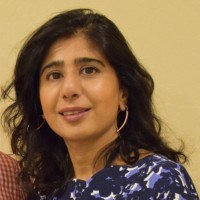
Vineeta Bassi
Senior TPM, Coinbase

Bhargava Kondapalli
Technology Leader at AWS

Anupama Mayooranathan
Product TPM at Facebook

Mario Gerard
Founder, Mariogerard.com

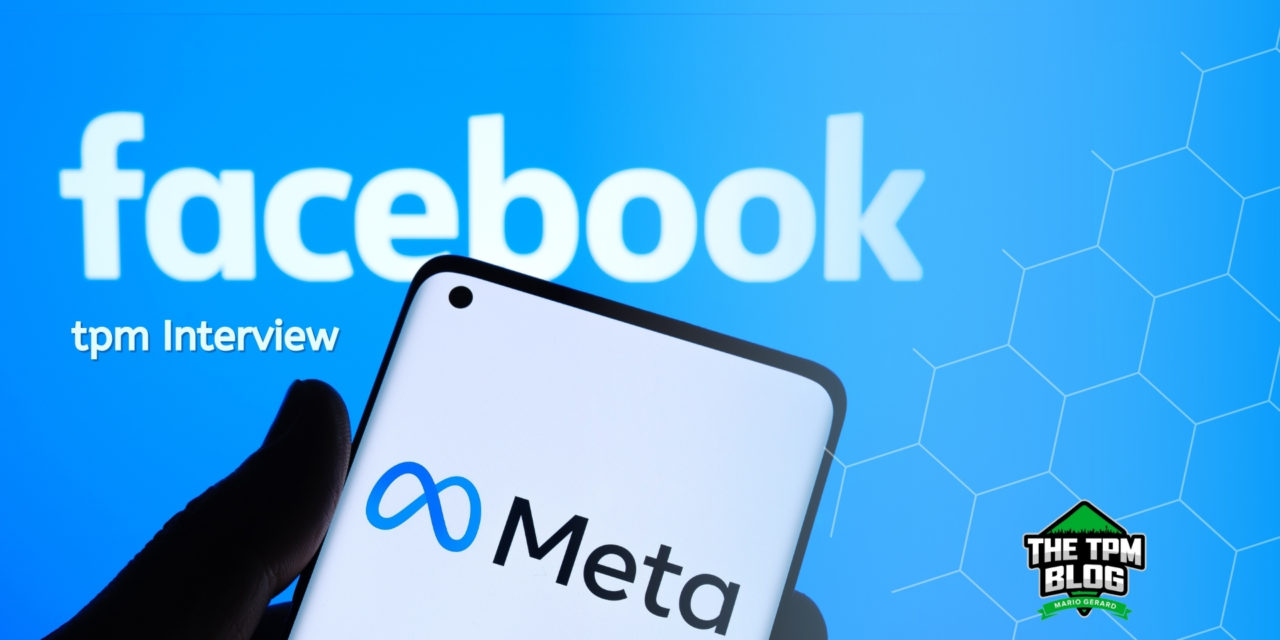
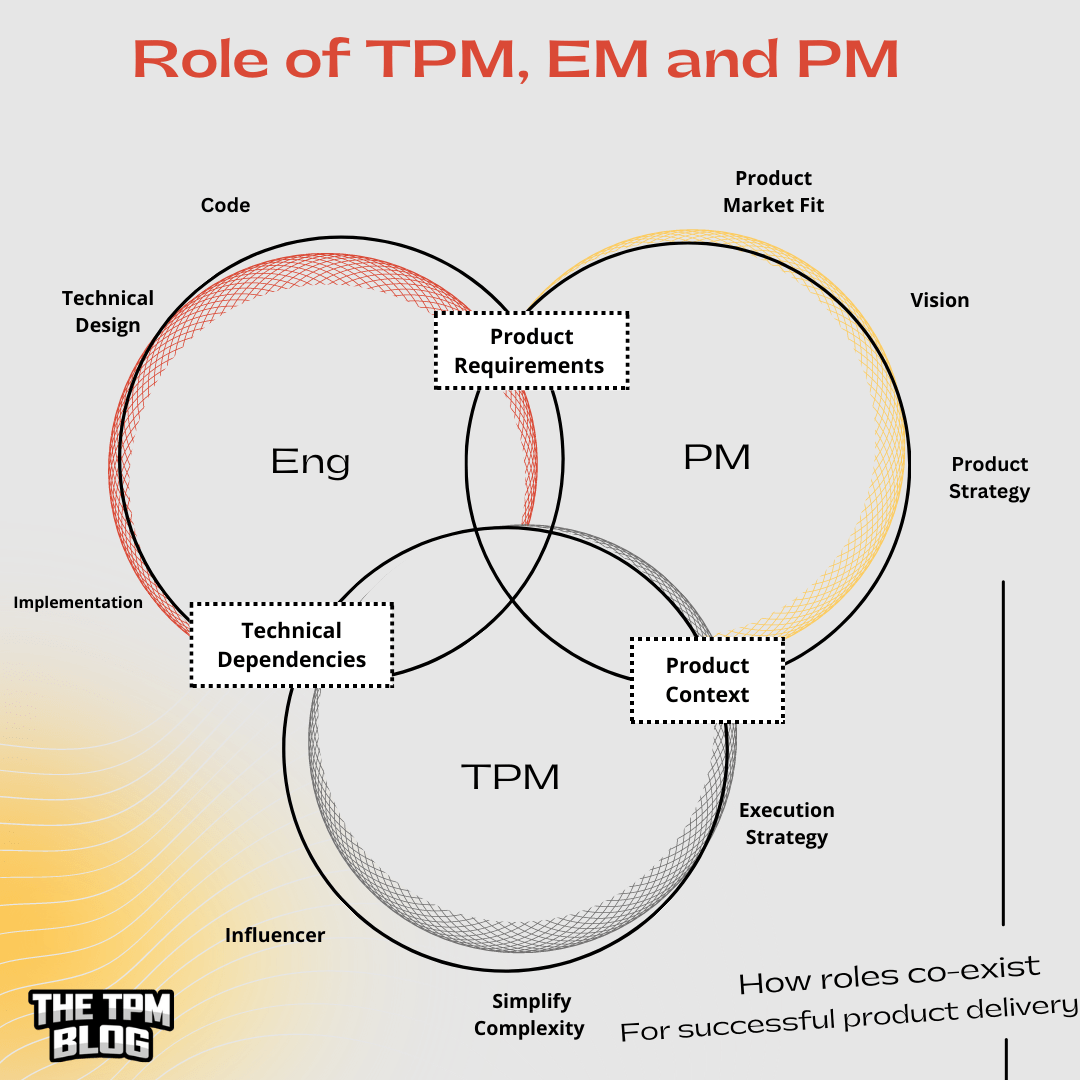
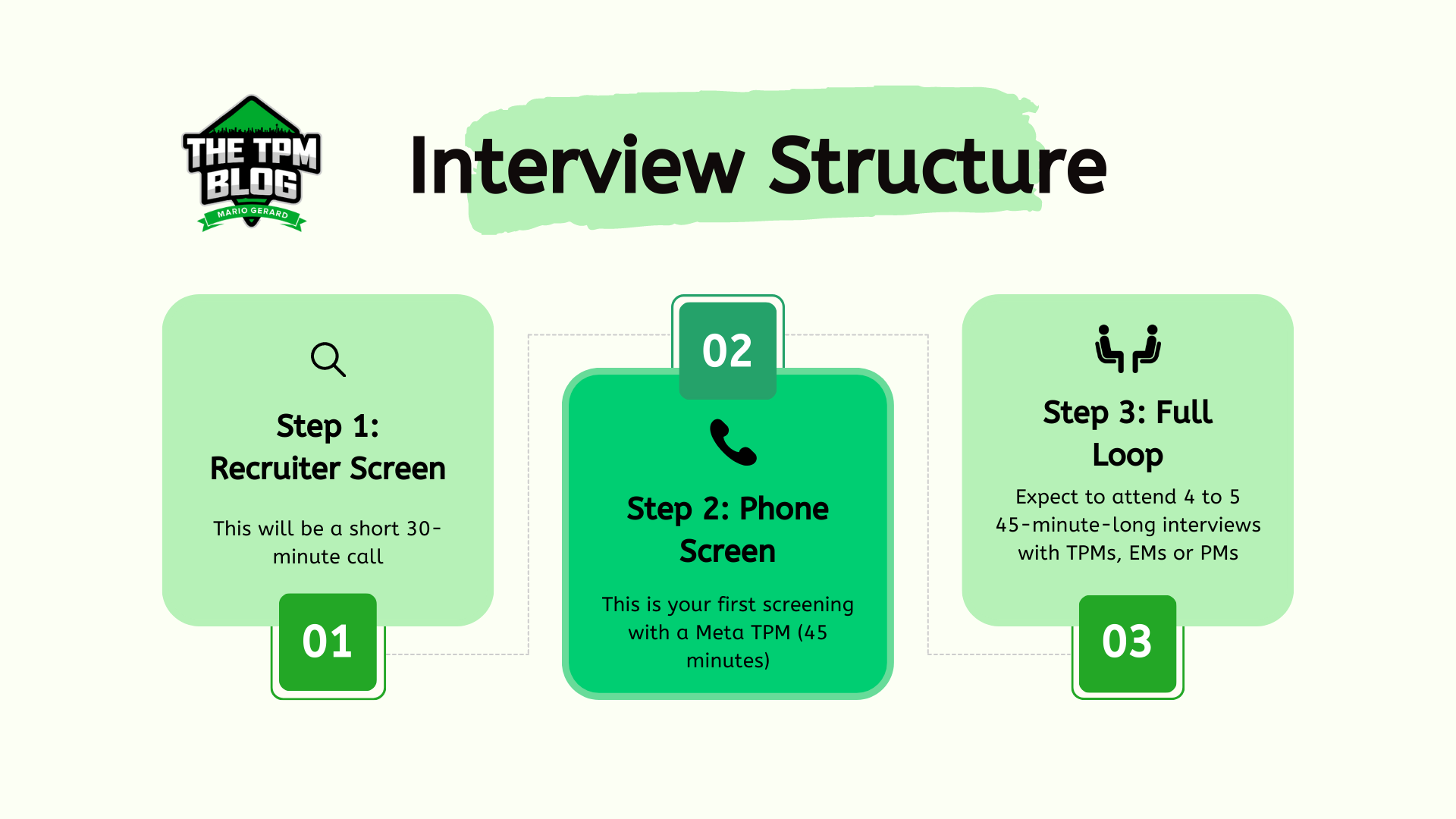
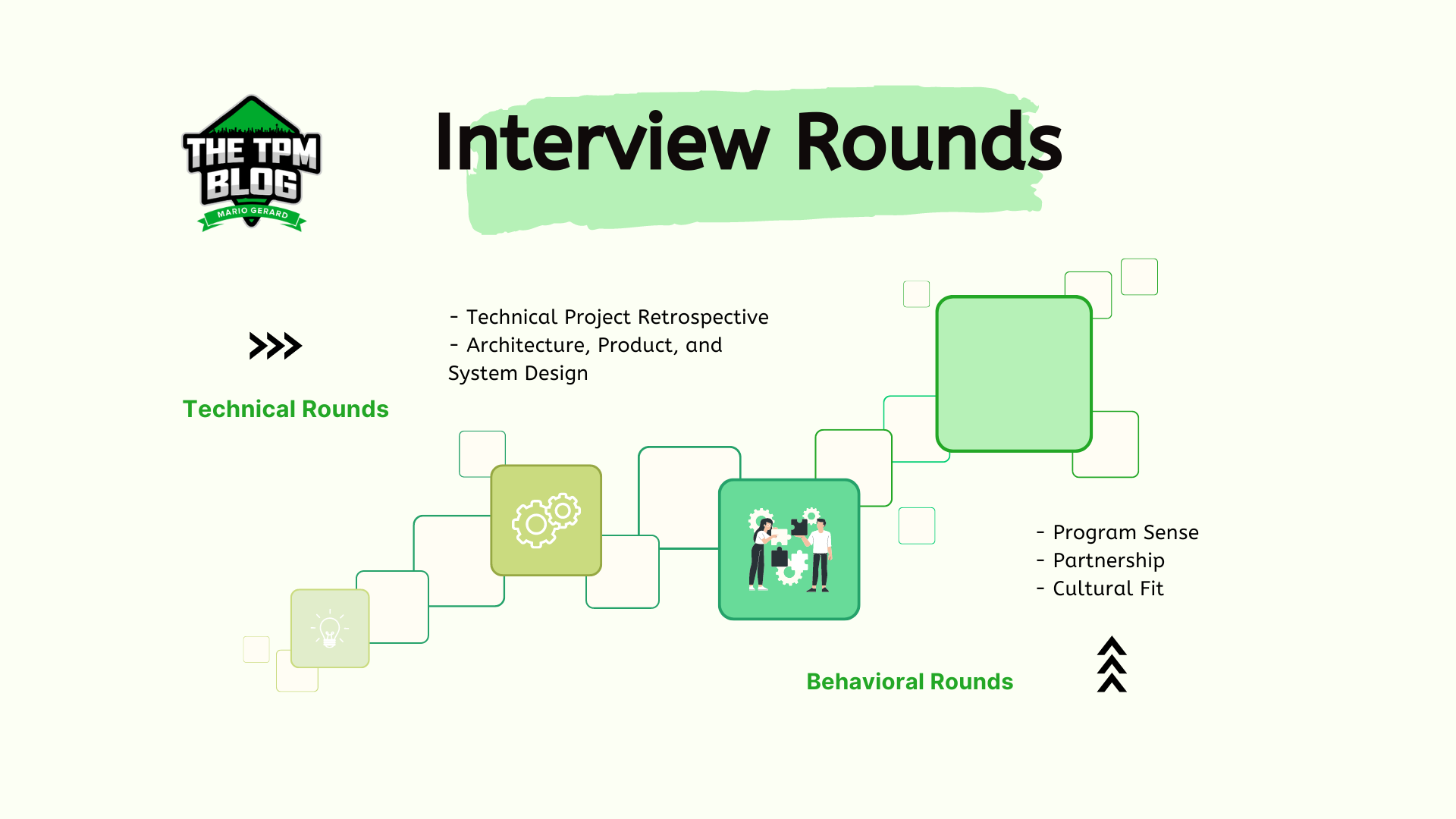
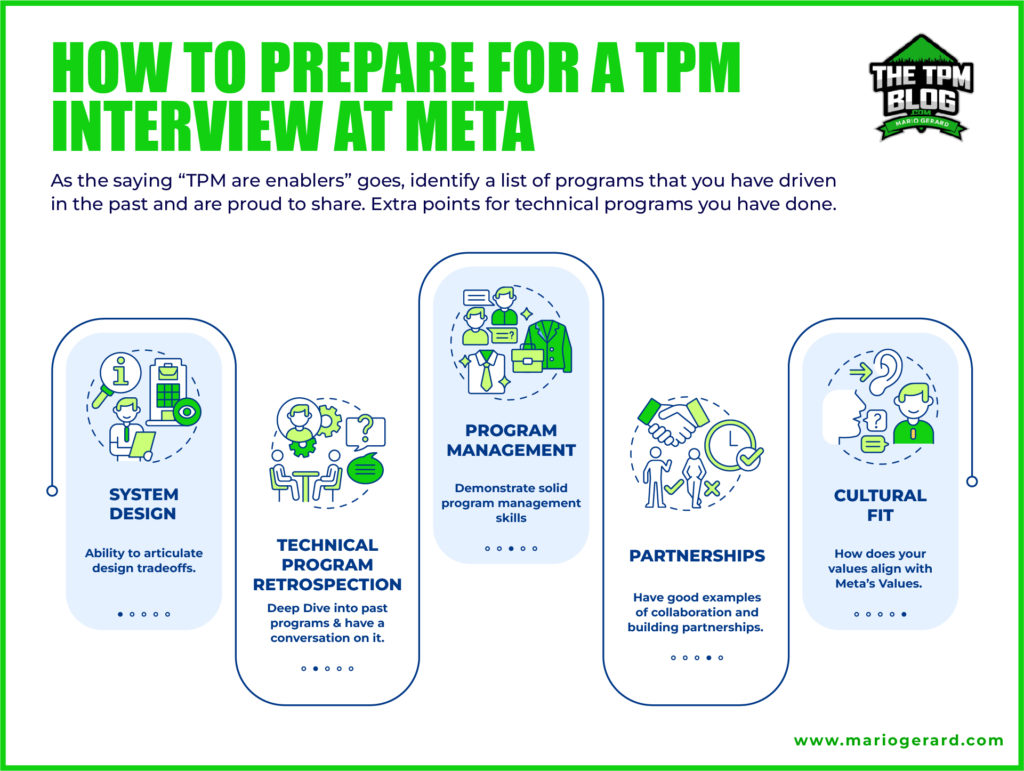











Big thanks to all of you for your time and effort in writing this. This helps a lot of people like me who are aspiring to get into Meta. I have one question, after principal TPM what are the next levels available from a career growth perspective?
In the EM, TPM, PM venn diagram, the left side of the TPM segment lost a few characters. Assuming it would be Influencer rather than luencer.
Awesome details and very nicely captured.